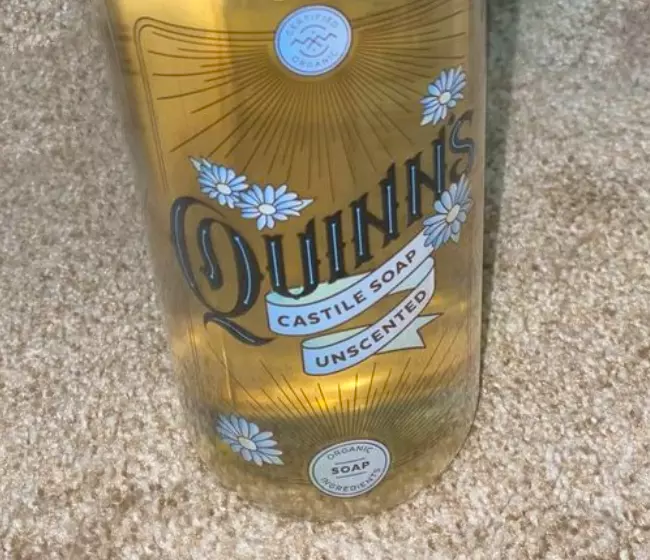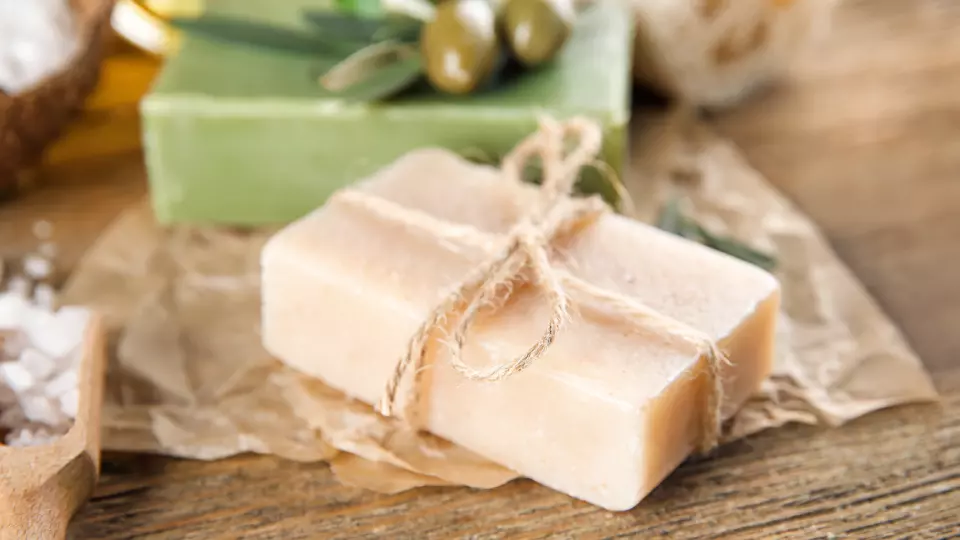Can Castile Soap Be Used to Clean Leather?
Leather is a supple and porous material that is best cleaned using natural ingredients. Typical natural cleaning solutions for leather include saddle soap, white vinegar, or dedicated leather cleaners.
However, not many people are aware that Castile soap, a product made from various plant oils such as sunflower seed, coconut, olive, and jojoba oils, is also a great alternative cleaning agent for leather.
This article will help you learn all there is to know about Castile soap, its suitability for cleaning leather, how to clean various leather products with it, and other natural alternatives you can use to keep your favorite leather products clean.
What Is Castile Soap Made Of?
Castile soap was initially made in the Mediterranean region before its use reached Europe. It got its official name, sapo castilliensis (Castilian soap) in Latin, from the Castile area of Spain.
It used to be made using lye (ash) and laurel oil initially, but other plant oils such as olive oil replaced laurel oil once it became unavailable in the area. Nowadays, Castile soap is made by mixing lye with a variety of natural plant oils and water.

Lye, commonly known as caustic soda (sodium hydroxide or potassium hydroxide), is a water-soluble, basic element with excellent cleaning properties. It is a natural degreaser for many applications, making it the perfect ingredient for natural soaps that are safe for use on leather.
Castile soap is created when lye is mixed with any plant or nut oil. Its natural ingredients enable it to clean almost anything and everything, cutting grime and dirt from your leather articles without damaging them. Let’s take a look at some of the ingredients of castor soap:
- Natural Oil – Vegetable or plant oils are one of the main ingredients for making Castile soap. Most Castile soaps are made from plant oils, such as olive oil, coconut oil, or avocado oil, which can be nourishing and highly beneficial for leather. This is why Castile soap is much better and environmentally friendlier than other soaps which contain animal lard or fats.
- Potassium Hydroxide – Potassium hydroxide or lye is a common ingredient used in soaps to facilitate the saponification process and also has excellent cleaning properties. Sodium hydroxide lye can also be used to make Castile soap.
Is Castile Soap Suitable for Leather?
Castile soap is a safe and natural cleaning solution for leather! Castile soap has a pH value between 8 and 9, which classifies it as a mild soap. It has a similar pH value to baking soda, ensuring that leather does not get damaged.
This natural soap does not contain any toxic or synthetic additives and is also environmentally friendly – it’s completely biodegradable. When it comes to cleaning leather, you’ll have the option to buy Castile soap in a solid or liquid form.
The liquid form is typically diluted according to your preference or usage. The only disadvantage of using Castile soap is that it might leave a residue on your leather articles if you do not remove the excess product.
This is a common side effect of using Castile soap, but the workaround is simple – just wipe off the excess to avoid any residue stains. While saddle soap is the more common and favored soap when it comes to cleaning leather products, Castile soap is a great alternative!
How to Use Castile Soap to Clean Leather
Using Castile soap to clean leather is straightforward. However, before starting the cleaning process it’s best that you prepare the following items :
- Castille soap (preferably in liquid form)
- Soft brush
- Microfiber cloth
- A bowl of warm water
1. Preparing the Leather
The first step requires you to prepare the leather article for cleaning. Remove the contents of your leather product – take out contents from leather bags or any objects in the pockets of your leather clothing.
After that, rub a microfiber cloth on your leather article to remove any dust or dirt settled on the material. Make sure that you clean the entire leather exterior so that all impurities are removed from the surface before the Castile soap application.
2. Cleaning the Leather with A Castile Soap Solution
Once the leather article has been prepped for cleaning, you’ll need to make a Castile soap solution. Start by mixing 1 tablespoon of pure Castile soap (in liquid form) with 1 cup of warm water in any type of bowl.
For this, we prefer using Quinn’s Pure Castile Organic Liquid Soap, as it contains biodegradable plant oils, no animal products, no chemicals, and no synthetic detergents.
You’ll be able to use a Castile soap of your choice. However, keep in mind that it should not contain any synthetic or harsh ingredients and should also be unscented.
General Cleaning
For general leather cleaning, dampen a microfiber cloth in the cleaning solution and lightly scrub the leather surface to clean away the grime and embedded dirt.
Once you have finished working on the entire leather surface, wipe away the excess and let it dry completely. You can also add the cleaning solution to an empty spray bottle to clean larger leather surfaces (leather upholstery or even car seats).
Spot Cleaning
You can increase the ratio of Castile soap if you’re dealing with stains that are tough to remove. Start by adding another tablespoon of pure Castile soap to the cleaning solution.
To treat tough stains on leather with Castile soap, apply the cleaning solution to the area with a soft brush or microfiber cloth and rub it gently in circular motions.
Apply a little more pressure until the stain is no longer visible. Once the stain is removed, wipe away the excess cleaning solution using a dry microfiber cloth.
3. Conditioning the Leather
Once the leather article is clean and dry, apply a thin layer of any suitable leather conditioner. Since the cleaning solution contains water, which can dry out leather, you’ll need to replenish it with natural oils.
A conditioner can reintroduce natural oils within the fibers of the leather keeping it supple, pliable, and lustrous for years to come.
4. Drying the Leather
Drying is one of the most important steps in the process. Dry your leather article in a clean, dry, well-ventilated, and cool place. Do not place the leather under direct sunlight. This could result in sun damage, and your leather items may begin to fade or crack.
Ensure that the drying space is not too cramped or humid since it will prevent proper drying and promote mold growth instead. Some places where you can dry your leather articles are:
- On a patio
- On a table
- On a Shaded verandah
- On a balcony
- Near an open window or door
- Near a fan
Suitable Alternatives to Castile Soap
Castile soap contains natural ingredients and can be safely used to clean your leather products without the risk of damaging them. However, there are also other effective and natural cleaning solutions that you can make use of.
These alternative cleaning solutions also contain natural ingredients and are safe for use on leather. They differ in various ways from Castile soap yet can offer the same cleansing and nourishing benefits.
Oil & White Vinegar
An oil and white vinegar mixture is one of the most effective and popular cleaning solutions for leather. You can clean most types of leather with this solution as it can significantly improve the leather’s texture and appearance.
When using vinegar on its own as a cleaning solution, it can dry out the leather. However, when you use it with a combination of natural oil, the vinegar gently cleanses the leather while the oil replenishes and renourishes it.
Therefore, an olive oil and soap mixture is similar to Castile soap, as both contain natural oils. However, the main difference is that one uses lye and the other white vinegar.
Saddle Soap
Saddle soap is another great way of cleaning leather articles since it contains natural ingredients like beeswax and lanolin. Unlike Castile soap, saddle soap is not vegan since beeswax and lanolin are sourced from bees and sheep.
Lanolin is a highly moisturizing element that can keep leather soft and give it a buttery appearance. On the other hand, beeswax is also an effective lubricating ingredient that can sustain the leather’s shine and suppleness for a long time.
This is why saddle soap can make for a great leather cleaner as well as an excellent leather conditioner.
Leather Cleaners
Another alternative option that you can use to clean leather is a dedicated leather cleaning product. You can find high-quality leather cleaners for all types, colors, and articles of leather.
They contain leather-friendly ingredients that ensure the leather does not discolor, get damaged, or dry out due to cleaning. However, these products are not always 100% natural and some may contain synthetic ingredients that are more potent and effective than Castile soap.
Therefore, it’s important that you only select leather cleaners that contain natural ingredients and that are designed to treat leather.

About Gerrit
Co-Founder, Researcher & Writer At Leatherskill
I’m a leather enthusiast who spends most of his free time crafting, researching, and writing about the many facets of this versatile material. Thanks for reading!

